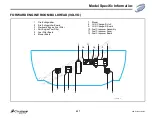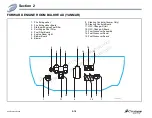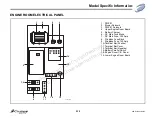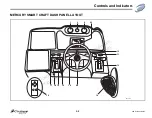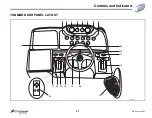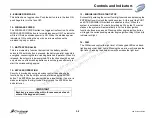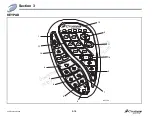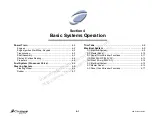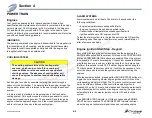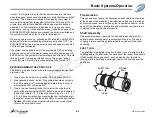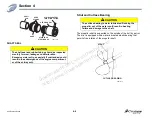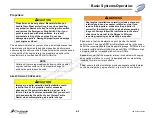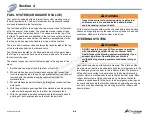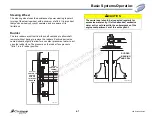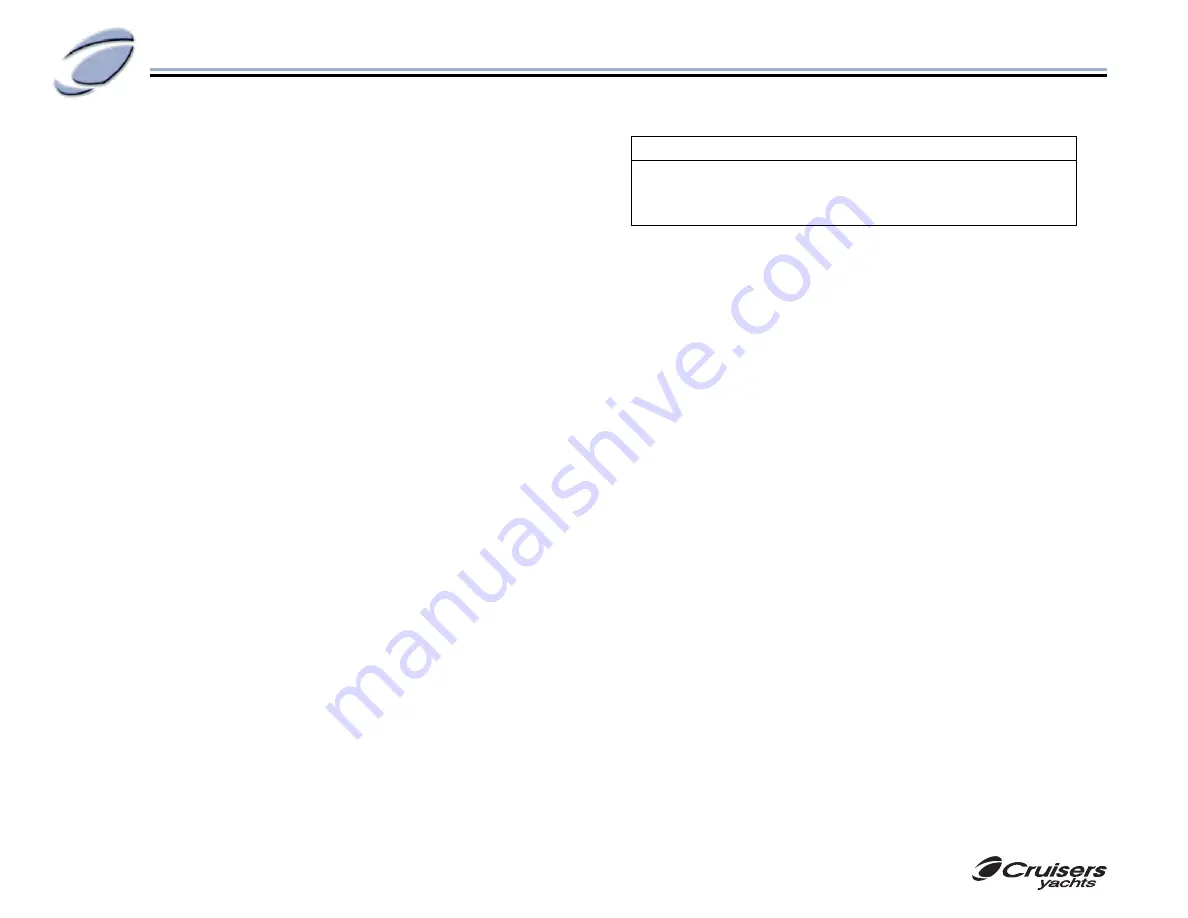
Section 3
3-2
460 Express Series
DASH PANEL LAYOUT
1 AND 2 - ENGINE TACHOMETERS
Item 1 is the port engine tachometer and item 2 is the starboard
engine tachometer. The tachometers register engine crankshaft
RPMs. Propeller shaft RPMs are approximately one half of engine
crankshaft RPMs. Refer to your engine owner's manual for the
appropriate engine speed.
3 - RUDDER ANGLE INDICATOR
The rudder angle indicator shows the position of the rudder in relation
to the centerline of the boat. This instrument is used to aid in low
speed maneuvering. Since a yacht of this size responds slowly to the
rudder at slow speeds, the rudder angle indicator gives a quick
reference to the amount of rudder being used in a turn.
4 - ENGINE TEMPERATURE GAUGES
The port gauge is a temperature gauge for the port engine, and the
starboard gauge is a temperature gauge for the starboard engine.
These gauges indicate cooling water temperature inside the engines.
Normally the gauge will register between 170°F (77°C) and 195°F
(91°C). Consult engine owner’s manual if the gauge registers outside
of this range.
5 - VOLTMETERS
The port gauge is a voltmeter for the port engine cranking battery, and
the starboard gauge is a voltmeter for the starboard engine cranking
battery. Normal operating voltage, when engines are above 1000
RPMs is between 12.0 and 15.5 volts. Higher or lower readings would
indicate that there is a problem. Refer to your engine owner’s manual
for details, and see your Cruisers Yachts Dealer for more information.
6 - FUEL GAUGES
The port gauge is the port fuel tank gauge, and the starboard gauge
is the starboard fuel tank gauge. The gauges indicate the approximate
amount of fuel in each tank.
7 - OIL PRESSURE GAUGES
The port gauge is an oil pressure gauge for the port engine, and the
starboard gauge is an oil pressure gauge for the starboard engine.
These gauges indicate the pressure of the lubricating oil inside the
engine. Make a note of the oil pressure reading when the yacht is
new. This can be considered your engine’s normal oil pressure.
Fluctuations will occur in the pressure under different operating
speeds, but major deviations may signal problems. If pressure stops
radically or is not registering, turn the engines off and see your
Cruisers Yachts Dealer.
8 - TRANSMISSION OIL PRESSURE GAUGES
The port gauge is a transmission oil pressure gauge for the port
engine transmission, and the starboard gauge is a transmission oil
pressure gauge for the starboard engine transmission. The
transmissions are hydraulically operated and ideally should read
between 300 and 320 psi. Small fluctuations are normal, but major
variations may indicate trouble. If pressure changes radically, shut
engines off and see your Cruisers Yachts Dealer.
9 - DEPTH FINDER
The depth finder can be turned ON by pushing the top of the adjacent
accessory switch.
IMPORTANT
Do not rely on the accuracy of gauges. Readings are only
approximate and should always be compared to the hours
of use multiplied by the known fuel consumption (GPH).
Downloaded
from
CruisersOwnersForum
http://www.CruisersOwnersForum.com


